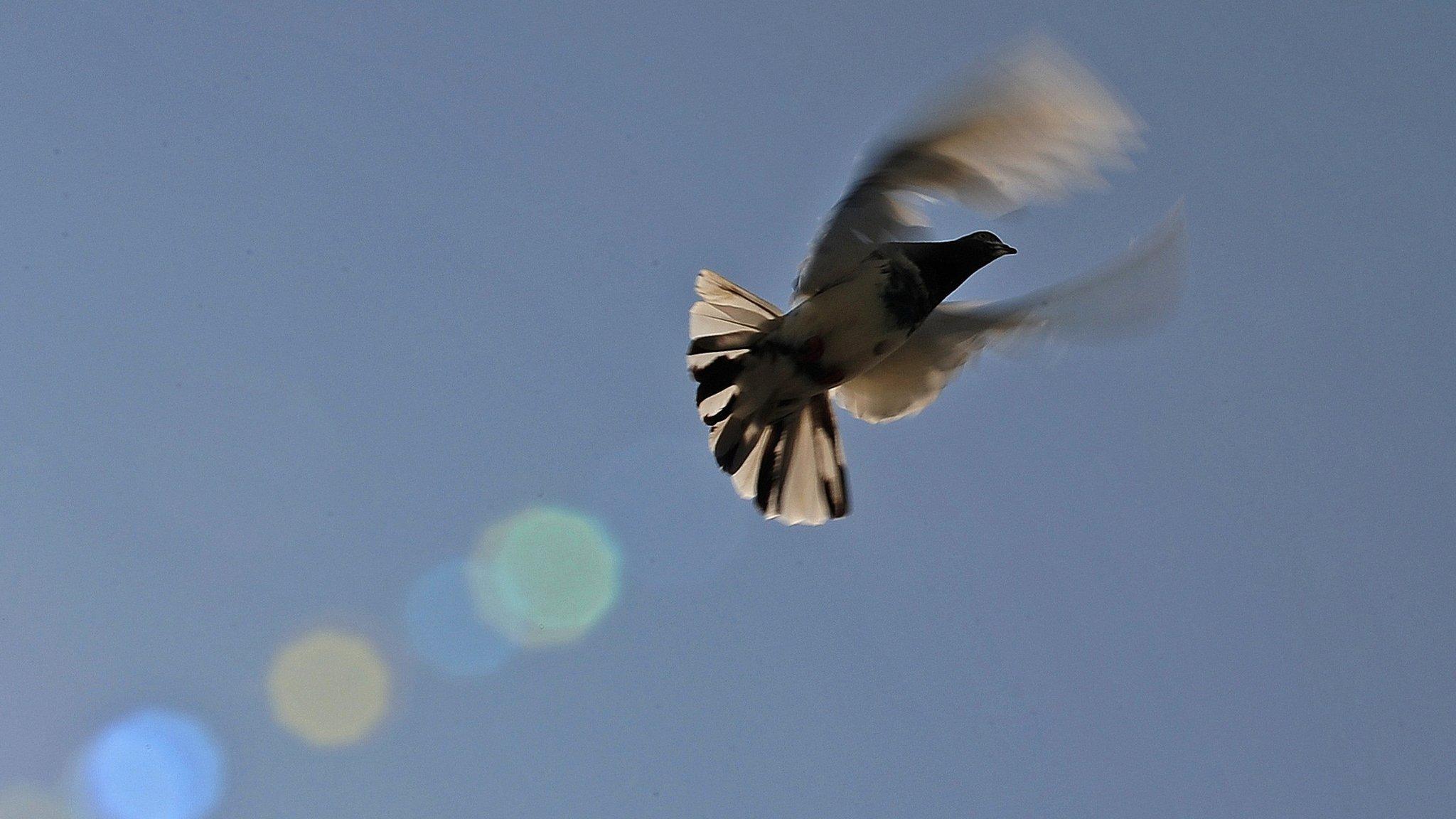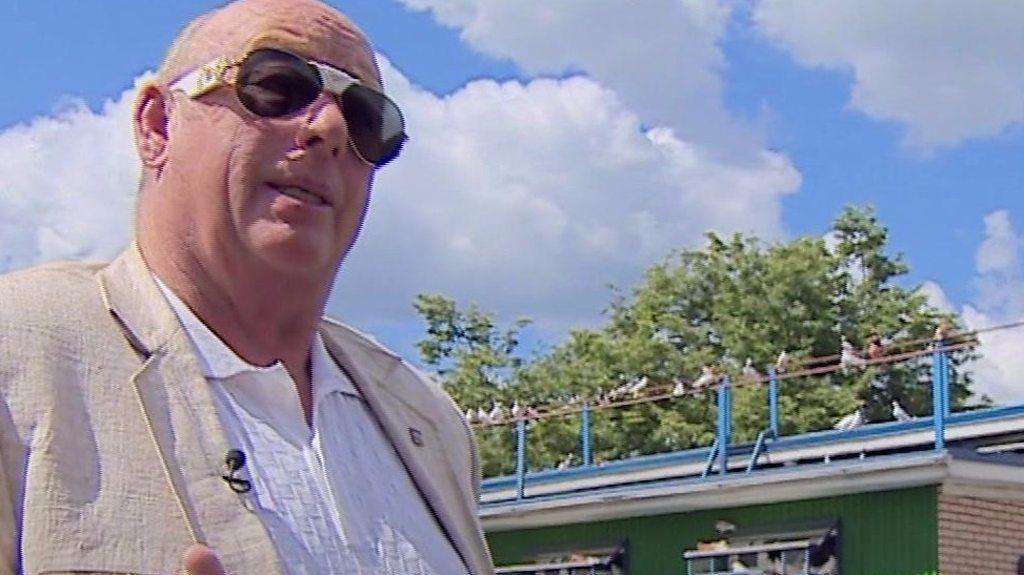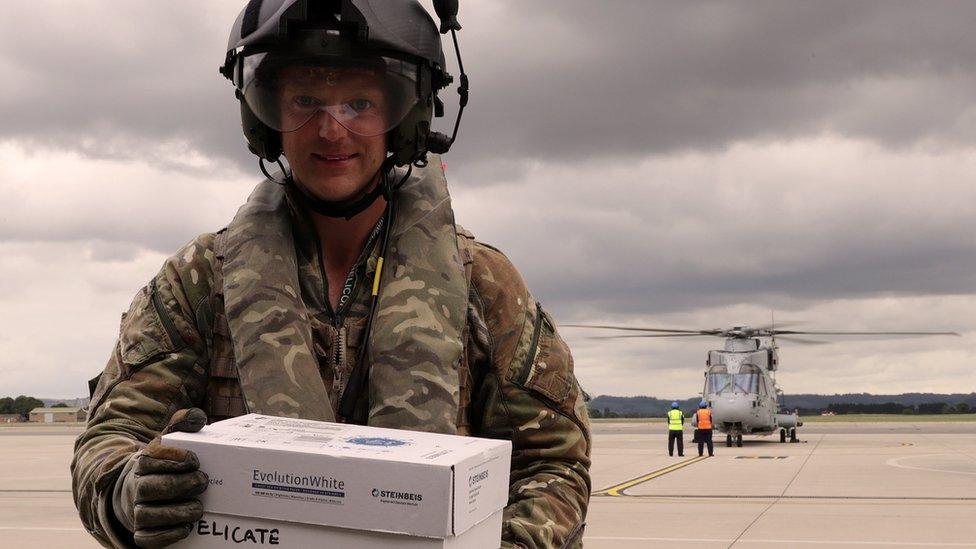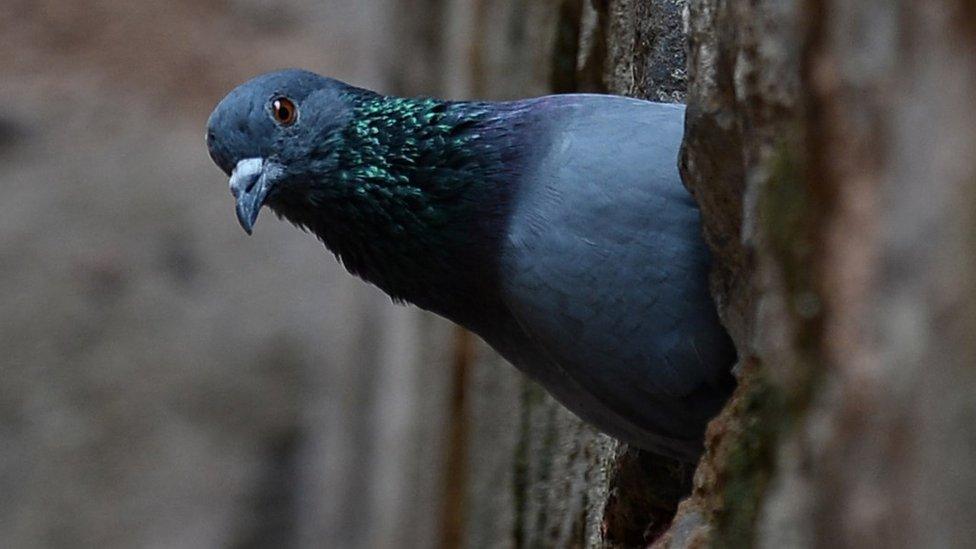Spanish pigeon relocation: Cádiz to relocate 5,000 birds
- Published

A scourge or a delight? However you feel about pigeons, the city of Cádiz has thousands too many
Authorities in the Spanish city of Cádiz have come up with a plan for their booming pigeon population - relocating some 5,000 birds.
The city is plagued by thousands of the birds and their associated waste - but officials did not want to poison them.
Instead, the plan is to capture thousands of pigeons and relocate them hundreds of miles away in a different region - and hope they do not return.
Local officials said it was a "more respectful and sustainable" solution.
Speaking to local newspaper Diario de Cádiz, councillor Álvaro de la Fuente said "managing the population of existing pigeons does not imply the eradication of them within the urban area."
Instead, he said a "logical balance" between the birds, humans, and other city-dwelling species was the goal.
The common pigeon is known for its location awareness - the famous homing pigeon used to carry war-time messages is a variant of the species.
But unlike their trained counterparts, the wild birds are often happy to settle in one local area - and officials in Cádiz hope that will be the case when all 5,000 pigeons are placed in their new home.
The thousands of birds to be relocated will be trapped, catalogued, and tested before being carried at least 170 miles (275km) away for release. Every bird will also get a health check along the way.
But pigeons breed quickly - so the city plans to print thousands of leaflets reminding the public not to overfeed the remaining flock, which helps to inflate the population.

Actress Elizabeth Taylor feeds the birds of Trafalgar Square, 1948
In London's Trafalgar Square, where the tradition of deliberately feeding the birds was immortalised in Disney's Mary Poppins film, the birds flocked in great numbers until the early 2000s.
A combination of banning the feed sellers and a hefty fine on those who feed the flock anyway was part of the solution - while the introduction of hawks was another.
Today, a professional falconer accompanies a Harris hawk or peregrine falcon to Trafalgar Square several times a week - a natural predator which warns off the less welcome, smaller bird.
The same technique is used at a number of other London landmarks including BBC Broadcasting House and the Wimbledon tennis complex. It scares the birds away from one area and disperses them more widely - but does not affect the actual population much.
- Published23 February 2012

- Published31 January 2013

- Published29 July 2017

- Published21 August 2018

- Published2 August 2017

- Published23 January 2018
